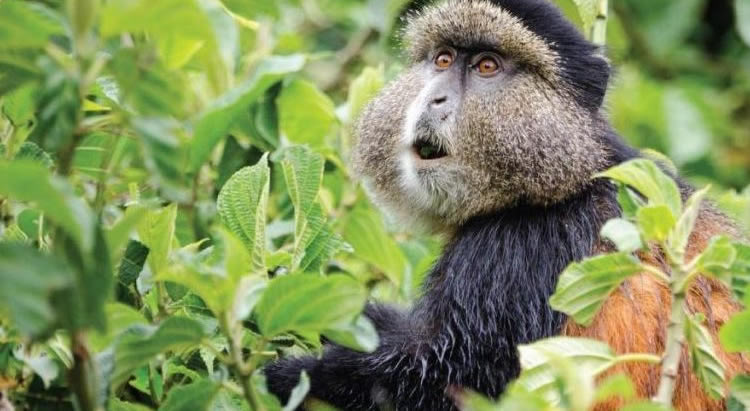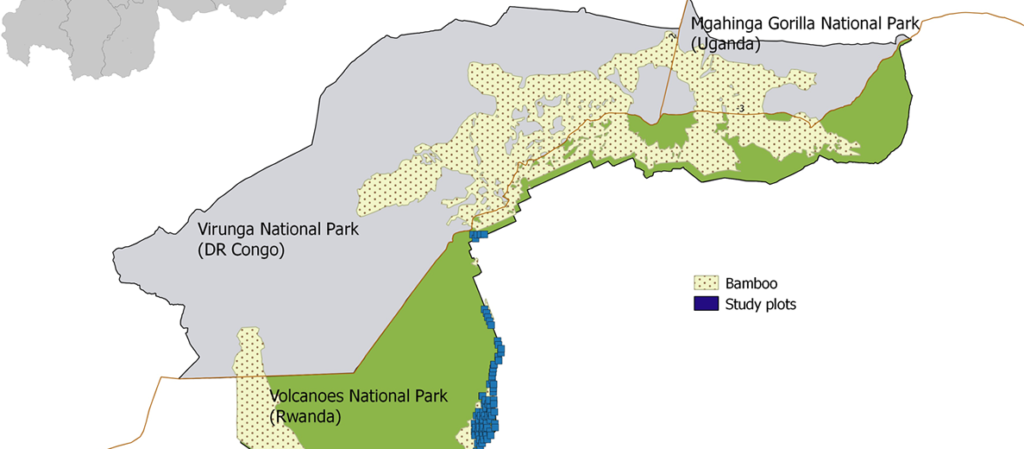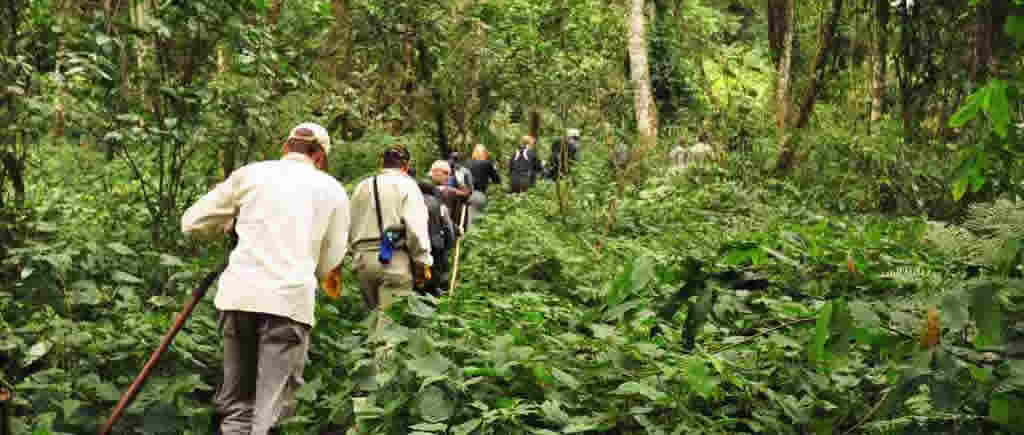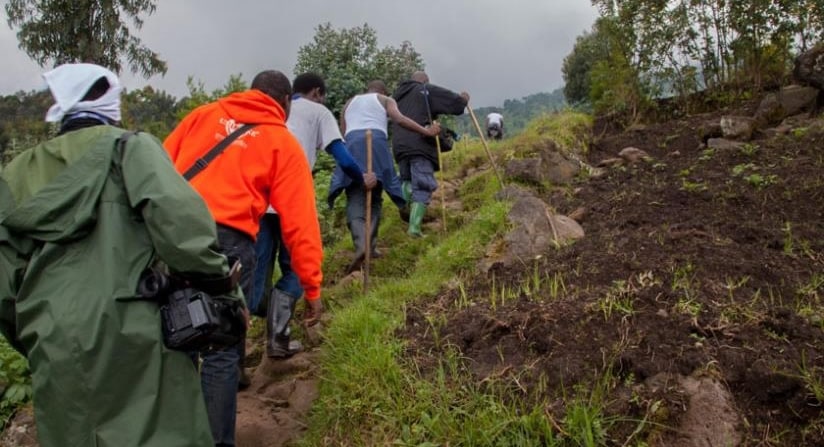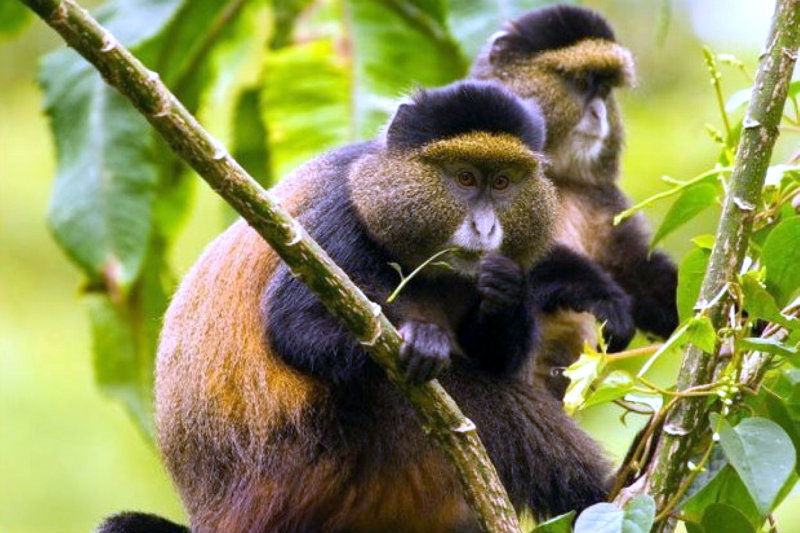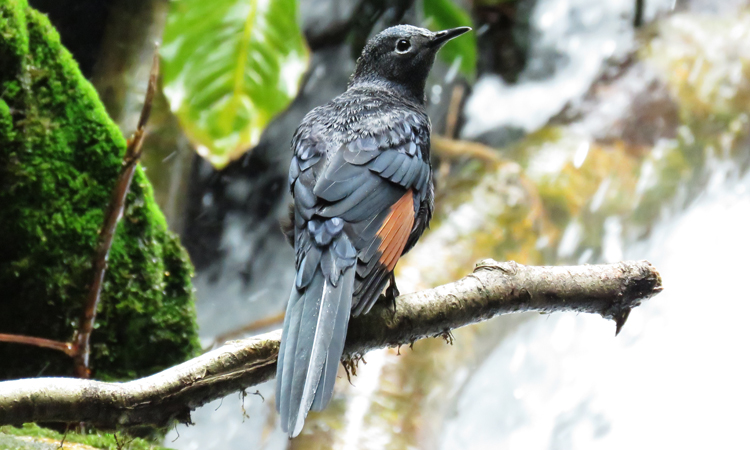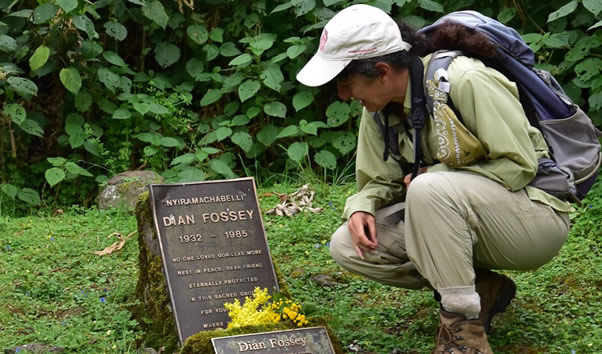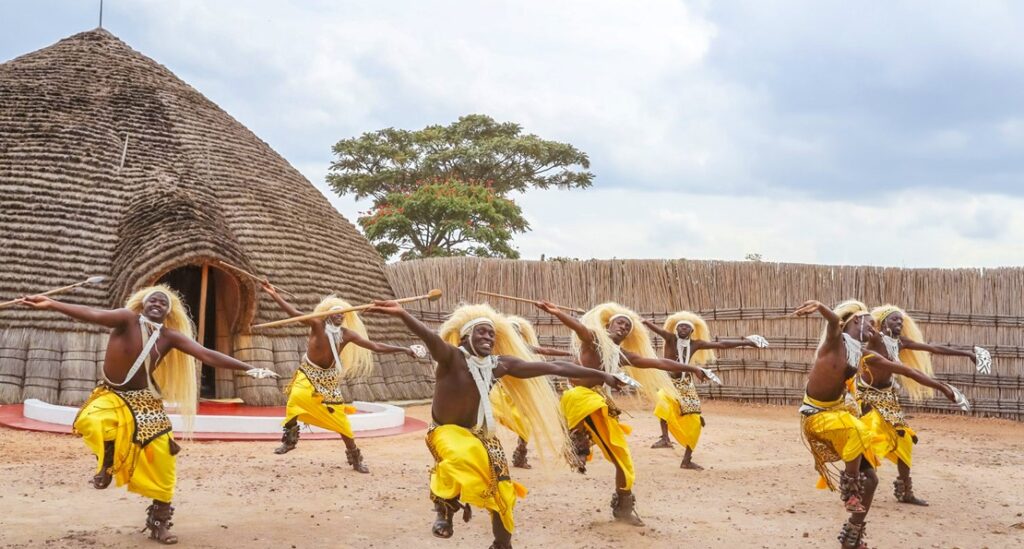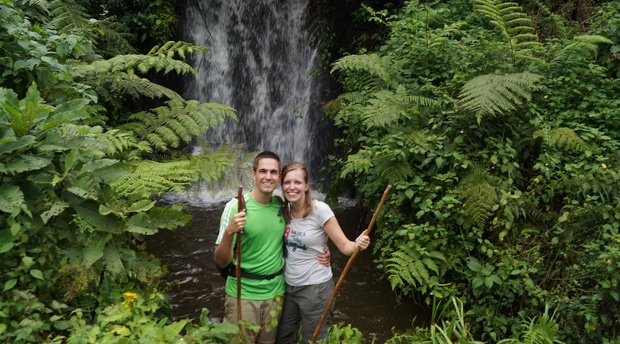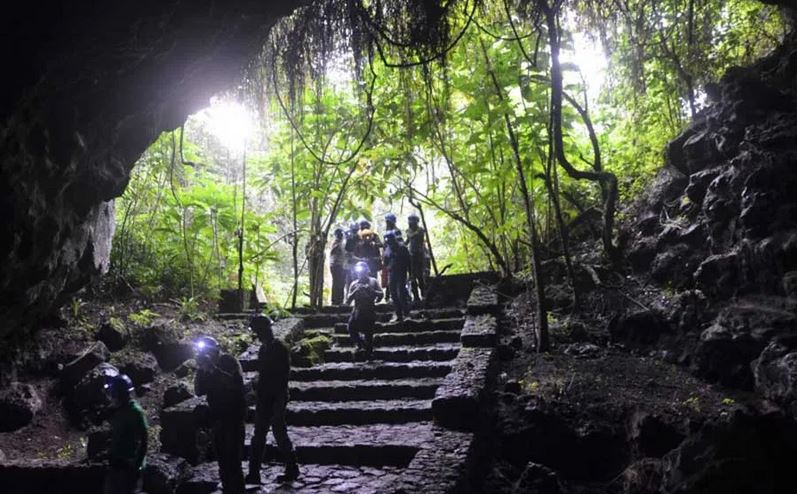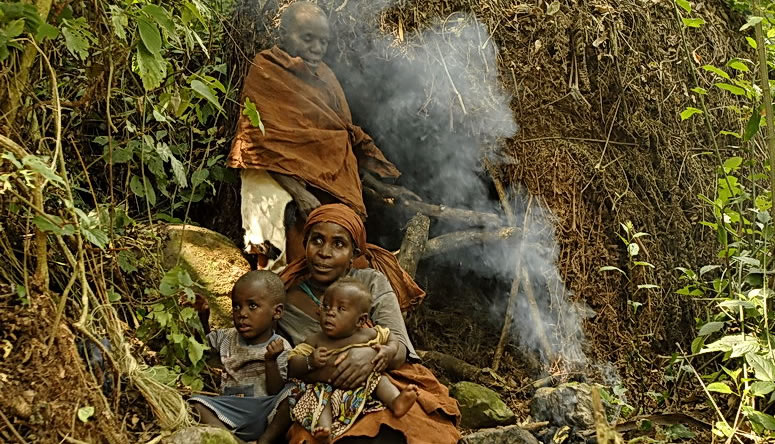Mgahinga Gorilla National Park is one of the iconic game parks in Uganda. Rising high in the clouds, Mgahinga N/Park boasts of its irresistible natural beauty and landscape views. This park was founded in 1991 and the reason for its establishment was to offer refuge to a portion of endangered mountain gorillas making it a treasured gorilla safari destination in Uganda, and Africa at large. Mgahinga gorilla park and other protected areas of Uganda are under the management of the Uganda Wildlife Authority.
Location
Mgahinga Gorilla National Park lies in the Albertine rift region, right in extreme Southwestern Uganda. Mgahinga sits in the Kisoro district, and it is part of the extensive Virunga Conservation Region/Area. The wider Virunga Conservation Area also encompasses Rwanda’s Volcanoes National Park and Virunga National Park in the D.R. Congo.
Mgahinga Gorilla National Park occupies a small area, about 33.7sq.km and it gets its name from the Gahinga volcano. The word Gahinga is a local word that is translated as small lava stones where cultivation is conducted. Mgahinga is set at an altitude of about 2227m to 4127m, and it features three scenic volcanoes including Mount Sabyinyo (3645m), Mt. Muhabura (4127m), and Mount Gahinga (3474m).
The word Sabyinyo means the old man’s teeth, derived considering the nature of Mt. Sabyinyo and Muhabura/Muhavura means guide. Mgahinga Gorilla National Park was created purposely to inhabit the endangered mountain gorillas, and today, these large apes share the same habitat with a diversity of other wildlife including golden monkeys, birds, etc.
Vegetation of Mgahinga
 Mgahinga National Park is one of the most splendid Uganda safari parks, boasting of its distinct vegetation zones. The park’s vegetation includes woodlands, savanna grassland, montane forest, tropical forests, Afro-montane forests, bamboo forests, marshes or swamps, bogs, and semi-alpine vegetation. Its volcanic mountain ranges plus the dense forests play a significant part in influencing climatic conditions.
Mgahinga National Park is one of the most splendid Uganda safari parks, boasting of its distinct vegetation zones. The park’s vegetation includes woodlands, savanna grassland, montane forest, tropical forests, Afro-montane forests, bamboo forests, marshes or swamps, bogs, and semi-alpine vegetation. Its volcanic mountain ranges plus the dense forests play a significant part in influencing climatic conditions.
The park remains one of the main water catchment areas in the Kisoro area. There are also many streams flowing from Crater Lakes at the volcano summits feeding the rivers and lakes at the base. The main rivers at the base of Mgahinga include Kabiranyuma, Nyabirerema, and Ntebeko Rivers, these are the main source of water for the local residents living adjacent to the park.
Wildlife
Over 39 mammal species make Mgahinga Game Park a special Uganda safari destination. The mammal species to see at Mgahinga include mountain gorillas, elephants, buffaloes, golden monkeys, red-tailed monkeys, spotted hyenas, vervet monkeys, black and white colobus monkeys, baboons, leopards, serval cats, black-fronted duikers, bushbucks.
Birds
Over 180 bird species reside in Mgahinga National Park, and the majority of these are Albertine rift endemic species. The alluring bird species to expect to identify at Mgahinga Gorilla National Park include the Rwenzori nightjars, thrush, and cinnamon bracken warblers, white stared robin, yellow-throated long claw, white-napped raven, white-necked raven, striped breasted tit, stone chat, stray seed-eaters, western green tinkerbird, shelley’s dusky crimson wing, red-faced woodland warblers, rufous chested swallow, Rwenzori doubled-collared sunbird, speckled mousebird, Southern red bishop, streaky seed-eaters, olive thrush;
Rwenzori turacos, Regal sunbird, pin-tailed whydah, olive woodpecker, malachite sunbird, paradise flycatchers, montane nightjars, scarlet-tufted sunbirds, fly eagle, fire finch stonechat, Kivu ground thrush, Grauer’s swamp warblers, handsome francolin, brown crowned tchagra, blue-headed coucal, collared apalis, Doherty’s bush-shrike, bronze sunbird, black-headed waxbill, Chubb’s cisticola, crowned crane, crowned hornbill, brown woodland warblers, black kite, yellow vented bulbul, Archer’s robin chat, ibis, yellow-billed kite, dusky turtle dove, cape robin chat, to mention but a few.
The people
Adjacent to Mgahinga National Park, there are Batwa, Bafumbira, and Bakiga, the main indigenous tribes that occupy this area. These 3 tribal groups primarily depend on subsistence farming and they practice it along the volcano slopes of Mgahinga Gorilla National Park, Southwestern Uganda. It is also possible to visit the Batwa or Bakiga community for educative or interactive cultural experiences.
Top safari activities to do in Mgahinga Gorilla National Park
Gorilla trekking
 In Uganda, there are 2 locations to enjoy guided mountain gorilla trekking. These include Bwindi Impenetrable National Park and Mgahinga National Park, all 2 Uganda safari parks are found on the Southwestern side of the country. Mgahinga is geographically set in the Kisoro district, and it is home to both the rare mountain gorillas and golden monkeys. Trekking Mgahinga gorillas is done during the day and takes about 2-6 hours to complete the whole adventure with a maximum of 1 hour of a face-to-face encounter with mountain gorillas guaranteed to all guests. Mgahinga has only one fully habituated gorilla family; the Nyakagezi gorilla group and this is visited by a maximum of 8 guests each making it an ideal group to visit if you don’t like overcrowding. Gorilla permits for Mgahinga cost USD700 for foreign non-residents, USD600 for foreign residents & shs. 250000 for East African citizens.
In Uganda, there are 2 locations to enjoy guided mountain gorilla trekking. These include Bwindi Impenetrable National Park and Mgahinga National Park, all 2 Uganda safari parks are found on the Southwestern side of the country. Mgahinga is geographically set in the Kisoro district, and it is home to both the rare mountain gorillas and golden monkeys. Trekking Mgahinga gorillas is done during the day and takes about 2-6 hours to complete the whole adventure with a maximum of 1 hour of a face-to-face encounter with mountain gorillas guaranteed to all guests. Mgahinga has only one fully habituated gorilla family; the Nyakagezi gorilla group and this is visited by a maximum of 8 guests each making it an ideal group to visit if you don’t like overcrowding. Gorilla permits for Mgahinga cost USD700 for foreign non-residents, USD600 for foreign residents & shs. 250000 for East African citizens.
Volcano climbing
Mgahinga is one special destination that is full of remarkable adventures and volcano climbing is a must-do on the Uganda tour in this park. Volcano hikes/climbing is done on the three volcanoes; Mount Muhabura with an altitude of 4127m, about 8 hours trek to cover its 12kms journey to the summits. Mount Gahinga treks 8 km to the summits, translating to about 6 hours and Mount Sabyinyo takes about 8 hours.
Golden monkey trekking
 Golden monkeys live in Mgahinga, and there are already habituated troops to be visited. Golden monkey tracking takes a short time, about 2-4 hours and it includes one hour of a close encounter with the golden monkeys, the sub-species of blue monkeys.
Golden monkeys live in Mgahinga, and there are already habituated troops to be visited. Golden monkey tracking takes a short time, about 2-4 hours and it includes one hour of a close encounter with the golden monkeys, the sub-species of blue monkeys.
Golden monkeys are endemic to the Albertine rift region, specifically the Virunga area, and a section of them also live in Congo and Rwanda. They spend most of their time in the bamboo forest feeding on bamboo shoots.
Other than normal golden monkey trekking, it is also possible for you to undertake a golden monkey habituation experience. Uganda golden monkey habituation permits cost USD100 per person.
Birding
Over 180 alluring avifaunal species are all hosted in the various habitats of Mgahinga Gorilla National Park. These include a long list of birds such as striped breasted tit, Kivu ground thrush, red-faced woodland warblers, olive woodpeckers, yellow vented bulbul, white starred robin, yellow-throated long claw, Rwenzori turacos, cinnamon bracken warblers, rufous chested swallow, montane nightjar;
Alpine chat, olive pigeon, Rwenzori batis, Chubb’s cisticola, Blue-headed sunbird, paradise flycatchers, and mountain masked apalis, to mention but a few. The special birding trails to expect to explore at Mgahinga include the Gorge trail, and Bamboo and Montane Forest trails.
Batwa trail & cultural experience
 The Batwa trail cultural experience offers a deep insight into the Batwa pygmies’ cultures and traditions. The Batwa pygmies were once the forest keepers, but they were displaced when Mgahinga Gorilla National Park and Bwindi were created as National Parks. Today, the Batwa reside adjacent to the park and a cultural tour in their local community is a great opportunity to explore their unique cultures, traditions, and norms and get entertained by their dances, music performances, etc.
The Batwa trail cultural experience offers a deep insight into the Batwa pygmies’ cultures and traditions. The Batwa pygmies were once the forest keepers, but they were displaced when Mgahinga Gorilla National Park and Bwindi were created as National Parks. Today, the Batwa reside adjacent to the park and a cultural tour in their local community is a great opportunity to explore their unique cultures, traditions, and norms and get entertained by their dances, music performances, etc.
Guided nature walks
Nature walks in Mgahinga National Park take you deep into the hidden habitats of the park to explore diverse wildlife and flora. Mgahinga is beautiful regardless of its size, featuring lots of scenic Lakes, Rivers, Swamps, forests/vegetation. The trails to consider conquering on a guided nature walk at Mgahinga N/Park include the border trail located at Mount Sabyinyo slopes/base area. It is 5 hours walk with an opportunity for you to enjoy the view of interesting primates and floral species.
Best time to visit Mgahinga Game Park, Uganda
Tours to Mgahinga Gorilla National Park can be arranged all year round. But the dry season is the best time to enjoy most of Mgahinga’s adventures like gorilla trekking and this is from June to September, and December to February. The wetter months of March to May, and October to November are often characterized by heavy rains and the slopes or ground can be slippery or muddy. These months are ideal for birding being the breeding period or season when migratory birds can be sighted.
Where to stay
 Mgahinga Gorilla National Park’s accommodations comprise luxury, mid-range, and budget lodging options. They include Mount Gahinga Lodge, Mount Gahinga Rest Camp, Traveler’s Rest Hotel in Kisoro, Traveler’s Nest Hotel, Virunga Hotel, Mucha Hotel Kisoro, Lake Mutanda Campsite, Chameleon Hill Lodge, Clouds Mountain Gorilla Lodge, Amajambere Iwacu Community Camp, and others.
Mgahinga Gorilla National Park’s accommodations comprise luxury, mid-range, and budget lodging options. They include Mount Gahinga Lodge, Mount Gahinga Rest Camp, Traveler’s Rest Hotel in Kisoro, Traveler’s Nest Hotel, Virunga Hotel, Mucha Hotel Kisoro, Lake Mutanda Campsite, Chameleon Hill Lodge, Clouds Mountain Gorilla Lodge, Amajambere Iwacu Community Camp, and others.
How to get to Mgahinga N/Park, Uganda
Road transportation: traveling by car to Mgahinga National Park is possible and it takes you 8-10 hours to drive from Kampala connect to Masaka to Mbarara-Kabale-Kisoro or drive from Kigali via Chanika border to Kisoro, then finally get to Mgahinga National Park.
Air transportation: scheduled or chartered flights can be planned in advance by your tour operator. You will be setting off from Entebbe International Airport -EBB or Kajjansi airstrip to Kisoro and driving a short distance to Mgahinga Gorilla National Park for your golden monkey tracking tour or mountain gorilla encounter.






